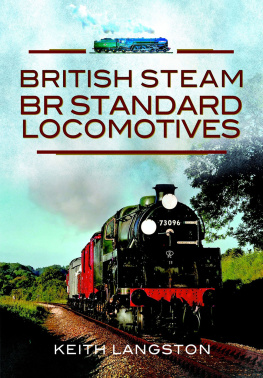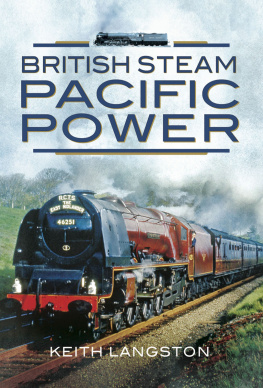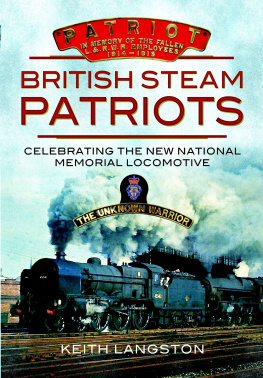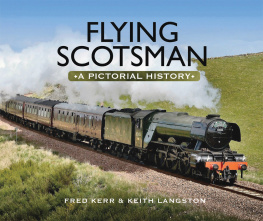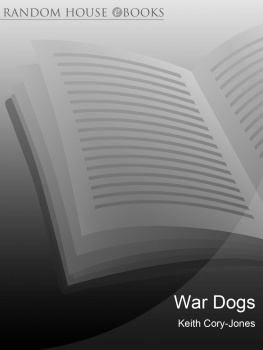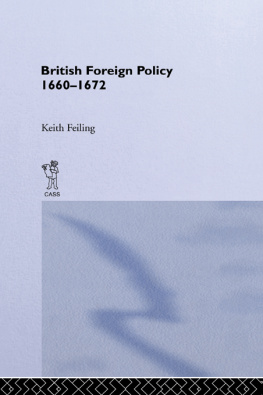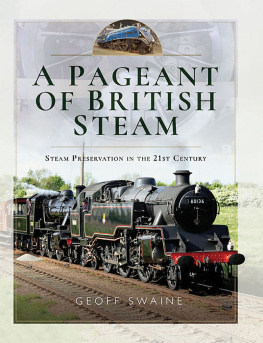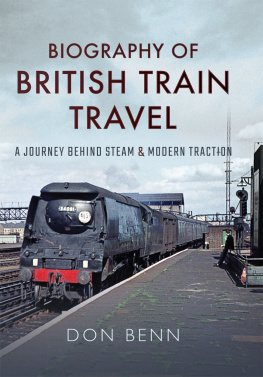Keith Langston - British Steam BR Standard
Here you can read online Keith Langston - British Steam BR Standard full text of the book (entire story) in english for free. Download pdf and epub, get meaning, cover and reviews about this ebook. year: 2013, publisher: Pen & Sword Books, genre: Non-fiction. Description of the work, (preface) as well as reviews are available. Best literature library LitArk.com created for fans of good reading and offers a wide selection of genres:
Romance novel
Science fiction
Adventure
Detective
Science
History
Home and family
Prose
Art
Politics
Computer
Non-fiction
Religion
Business
Children
Humor
Choose a favorite category and find really read worthwhile books. Enjoy immersion in the world of imagination, feel the emotions of the characters or learn something new for yourself, make an fascinating discovery.
- Book:British Steam BR Standard
- Author:
- Publisher:Pen & Sword Books
- Genre:
- Year:2013
- Rating:5 / 5
- Favourites:Add to favourites
- Your mark:
- 100
- 1
- 2
- 3
- 4
- 5
British Steam BR Standard: summary, description and annotation
We offer to read an annotation, description, summary or preface (depends on what the author of the book "British Steam BR Standard" wrote himself). If you haven't found the necessary information about the book — write in the comments, we will try to find it.
British Steam BR Standard — read online for free the complete book (whole text) full work
Below is the text of the book, divided by pages. System saving the place of the last page read, allows you to conveniently read the book "British Steam BR Standard" online for free, without having to search again every time where you left off. Put a bookmark, and you can go to the page where you finished reading at any time.
Font size:
Interval:
Bookmark:
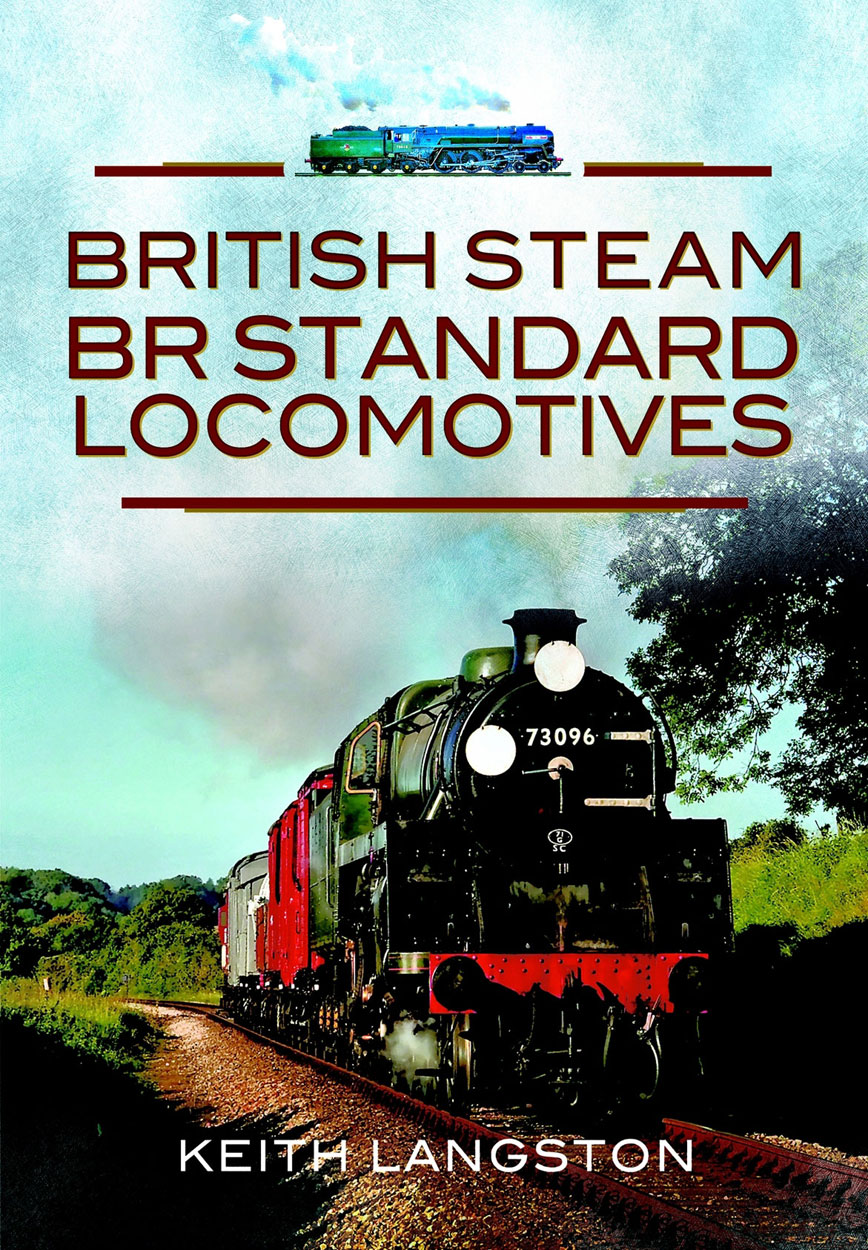
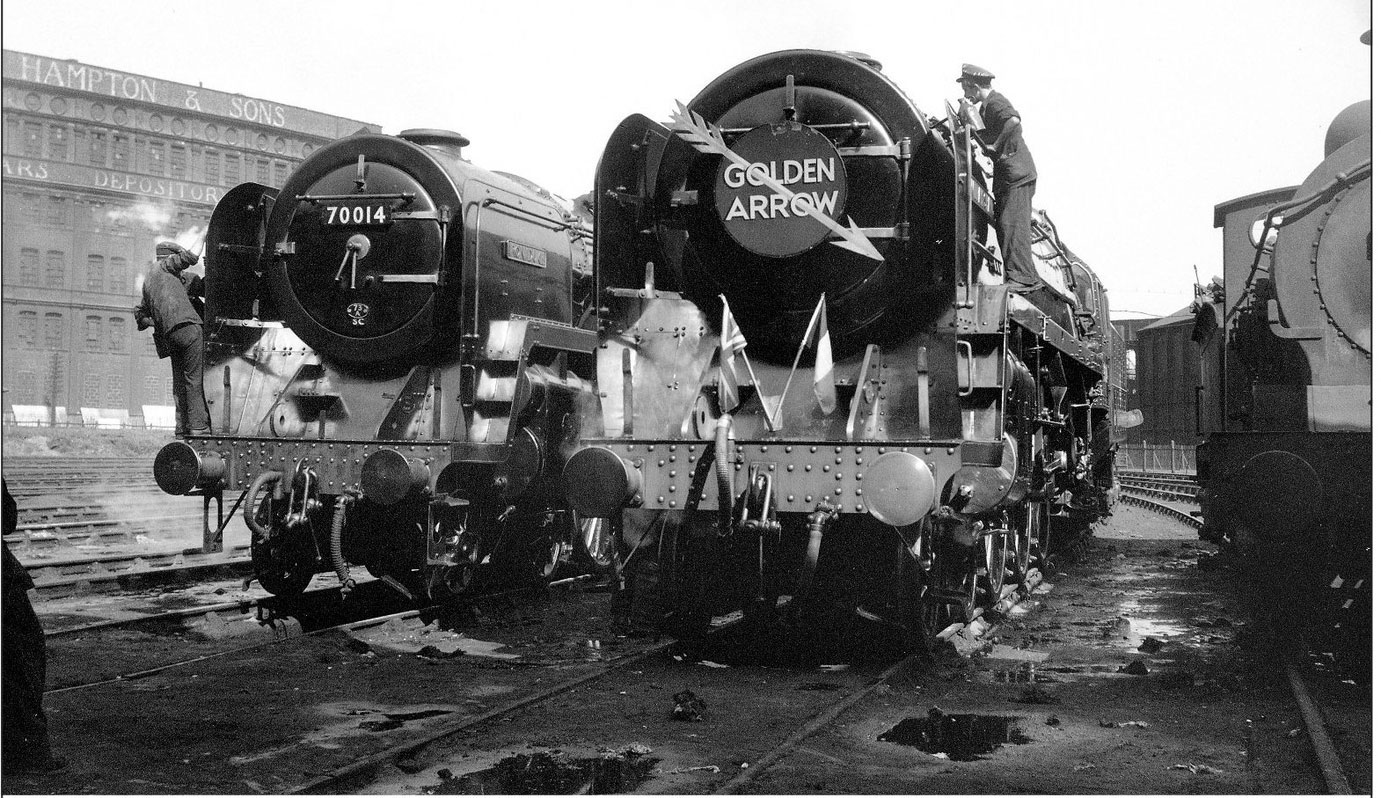
Stewarts Lane Brits 70004 & 70014 receive a spruce up!
This cracker is just one of thousands of quality colour and black &
white steam era images which can be viewed as part of the huge
collection now accessible at
THE RAIL PHOTOPRINTS COLLECTION
www.railphotoprits.zenfolio.com
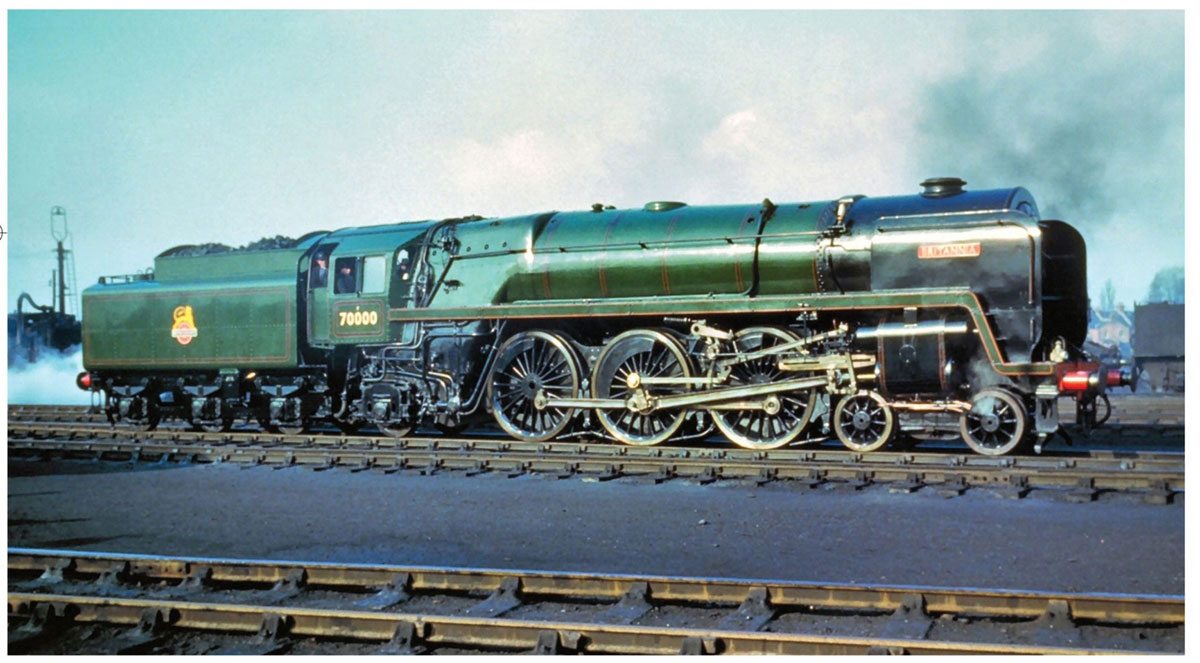
First of the 999 BR Standard Class locomotives, 4-6-2 No 70000 BRITANNIA is pictured at Neasden (24E) en-route to Marylebone Station London for an official BR inspection and naming ceremony, by the then Minister of Transport Alfred Barnes MP on 30th January 1951.
Having been first out-shopped in un-lined black and without nameplates No 70000 was repainted into BR passenger green with, black and orange lining, a red background to the nameplate and a bright metal finish to the wheel rims, handrails, buffers and drawgear prior to the ceremony.
The Britannia livery was eventually changed to BR unlined green without bright metal fittings. For many years the cab roof of BRITANNIA was painted white to commemorate the loco hauling the funeral train of HRH King George VI from Norfolk to London, following his death at Sandringham in February 1952. Colour Rail
BR Standard Britannia Class was the first of the 999 Riddles Standard type locomotives to enter service. The first of the class 70000 BRITANNIA was rolled out of Crewe Locomotive Works in January 1951. The new class of 55 engines were considered at the time to be a striking design of Mixed Traffic locomotives, intended to have wide route availability. The Britannias were roughly equal in power to the Western Region (ex GWR) Castle class, the London Midland Region (ex LMS) Royal Scot class, the Southern Region (ex SR) West Country class and the Eastern Region (ex LNER) V2 class.
The 4-6-2 locomotives were designed in the Derby drawing office of BR and all were built at Crewe. They were given the number series 70000 to 70054 with 70000 to 70024 entering service in 1951, 70025 to 70044 entering service in 1952/53 and 70045 to 70054 entering service in 1954.
The Britannia boiler was designated BR1 type and its proportions were comparable with those of Gresleys widely acclaimed V2 boiler, which had proved to be an excellent steam producer. The BR1 was superheated and in keeping with Standard Design Group policy was fitted with a self-cleaning smokebox, rocking grate and self-emptying ashpan. To complete the new look Riddles added roller bearings and a tender cab. The new Pacific class was claimed by many observers at the time to have a distinctive LMS look to it.
The Britannia build specification took into all general aspects the Standard Design Groups criteria and in addition called for a liberal number of wash out plugs and doors, an enhanced design of regulator in the smokebox and improved accessibility of injectors and all pipe work. Importance was also placed on providing the enginemen with a better and more spacious cab/tender layout. In fact Riddles insisted that a wooden mock up of the proposed cab design be exhibited to staff prior to the intended design being signed off.
BR Pacific Britannia Class 7P6F (7MT) 4-6-2
Built: Crewe Works 195154, 54 locomotives built.
Loco Weight: 94 tons 0 cwt
Tenders: BR1 49 tons 3 cwt, BR1A 52 tons 10 cwt, BR1D 54 tons 10 cwt
Driving Wheels Diameter: 6 foot 2 inches
Boiler Pressure: 250lb/psi
Cylinders: (2) 20 inch diameter x 28 inch stroke
Valve Gear: (piston valves) Walschaerts
Coal Capacity: BR1 and BR1A 7 tons, BR1D 9 tons
Water Capacity: BR1 4250 gallons, BR1A 5000 gallons, and BR1D 4725 gallons
Tractive Effort: 32,150lb at (85% pressure)
The Riddles Class 7 Pacific was intended as a fast mixed traffic locomotive with wide route availability. The small (by express locomotive standards) 6ft 2in diameter driving wheels underlined the designers mixed traffic intentions, whilst their low axle loading (a little over 20 tons) satisfied route availability criteria. In addition the wheelbase of 58ft 3in meant that the class could easily be turned on the many 60ft turntables in use around the regions. The locomotives length over buffers was specified to be 68ft 9in.
The tractive effort of the Britannia class was listed at 32,150lb (at 85% boiler pressure) compared with for example the rebuilt Royal Scot class listed at 33,150lb (at 85% boiler pressure). At the time double blastpipes were seen as the norm for large locomotives, therefore observers were surprised by the Standard teams choice of single blastpipe and chimney. Riddles foresaw that the choice of just two 20in x 28in cylinders would appreciably reduce maintenance cost/time, in comparison to multi-cylinder locomotives.
Performance did not suffer either as the class constantly proved capable of maintaining express timings, often with heavily loaded trains. When in the care of a locomotive crew who had taken the time to learn the required technique of handling the two-cylinder Pacifics, performances more normally associated with multi-cylinder Class 8 steam power were regularly recorded.
Locomotives Nos 70000 to 70034 and 70050 to 70054 were fitted with roller bearings and thereafter engines Nos 70035 to 70039 were built with roller bearings fitted only on the leading and trailing coupled axles, in another deviation from original design specification loco Nos 70040 to 70049 were built with plain bearings throughout. Reportedly experience in traffic showed no great advantage with roller bearings when judged by either reliability or cost criteria.
Initial locomotive allocations for operating purposes:
Nos. 7000070014 Eastern Region
Nos. 7001570024 Western Region
Nos. 7002570029 Western Region
Nos. 7003070044 London Midland Region
Nos. 7004570049 London Midland Region
Nos. 7005070054 Scottish Region
However, in practice some early alterations took place with extra locomotives being reallocated to the Eastern Region and some to the Southern Region.
The class leader BRITANNIA suffered a failure on only its second revenue earning trip when on 2 February 1951, the loco blew out its right hand cylinder cover and piston head. The loco was very quickly repaired but some 12 days later a similar failure happened, to the locos left hand cylinder. Investigations revealed that a partial failure within the engines steam drier had caused incidents of water carry over into the cylinders. Later problems associated with water carry over affected the first batch of engines with the flat design of steam dome (with a smaller valve) being identified as the cause of the problems.
Further problems in traffic were reported as the first batch of locos entered revenue earning service. In fact the first 25 locos were temporarily withdrawn in October/November 1951 in order to rectify the fact that driving wheels had reportedly shifted on their axles. Initial concerns were raised even higher after loco No 70004 WILLIAM SHAKESPEARE suffered a snapped connecting rod whilst travelling at speed near Headcorn in Kent; furthermore 6 other instances of con-rod failure within the early production batch of the new class were reported. The fault was traced to the method used to fit the roller bearings onto the axles, and after modifications all 25 engines were returned to traffic by early 1952.
Font size:
Interval:
Bookmark:
Similar books «British Steam BR Standard»
Look at similar books to British Steam BR Standard. We have selected literature similar in name and meaning in the hope of providing readers with more options to find new, interesting, not yet read works.
Discussion, reviews of the book British Steam BR Standard and just readers' own opinions. Leave your comments, write what you think about the work, its meaning or the main characters. Specify what exactly you liked and what you didn't like, and why you think so.

